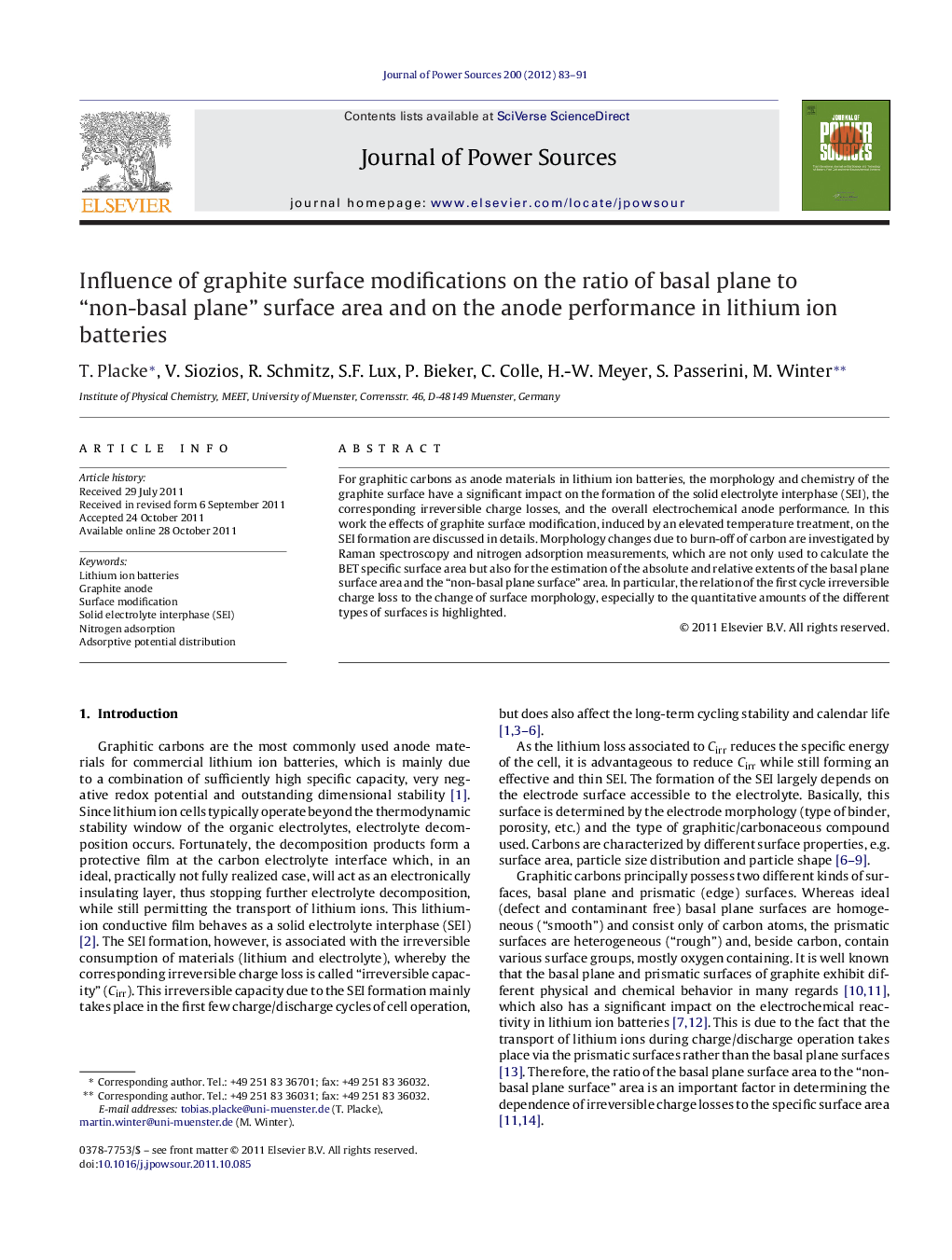| Article ID | Journal | Published Year | Pages | File Type |
|---|---|---|---|---|
| 1293235 | Journal of Power Sources | 2012 | 9 Pages |
For graphitic carbons as anode materials in lithium ion batteries, the morphology and chemistry of the graphite surface have a significant impact on the formation of the solid electrolyte interphase (SEI), the corresponding irreversible charge losses, and the overall electrochemical anode performance. In this work the effects of graphite surface modification, induced by an elevated temperature treatment, on the SEI formation are discussed in details. Morphology changes due to burn-off of carbon are investigated by Raman spectroscopy and nitrogen adsorption measurements, which are not only used to calculate the BET specific surface area but also for the estimation of the absolute and relative extents of the basal plane surface area and the “non-basal plane surface” area. In particular, the relation of the first cycle irreversible charge loss to the change of surface morphology, especially to the quantitative amounts of the different types of surfaces is highlighted.
► Effects of graphite surface modification by oxygen treatment on anode performance. ► Estimation of graphite morphology changes by density functional theory (DFT). ► Absolute and relative extents of basal plane and “non-basal plane surface” areas. ► Correlation of Cirr to change of quantitative amounts of graphitic surfaces is shown. ► Correlation of Raman spectra, DFT calculations and electrochemical performance.
